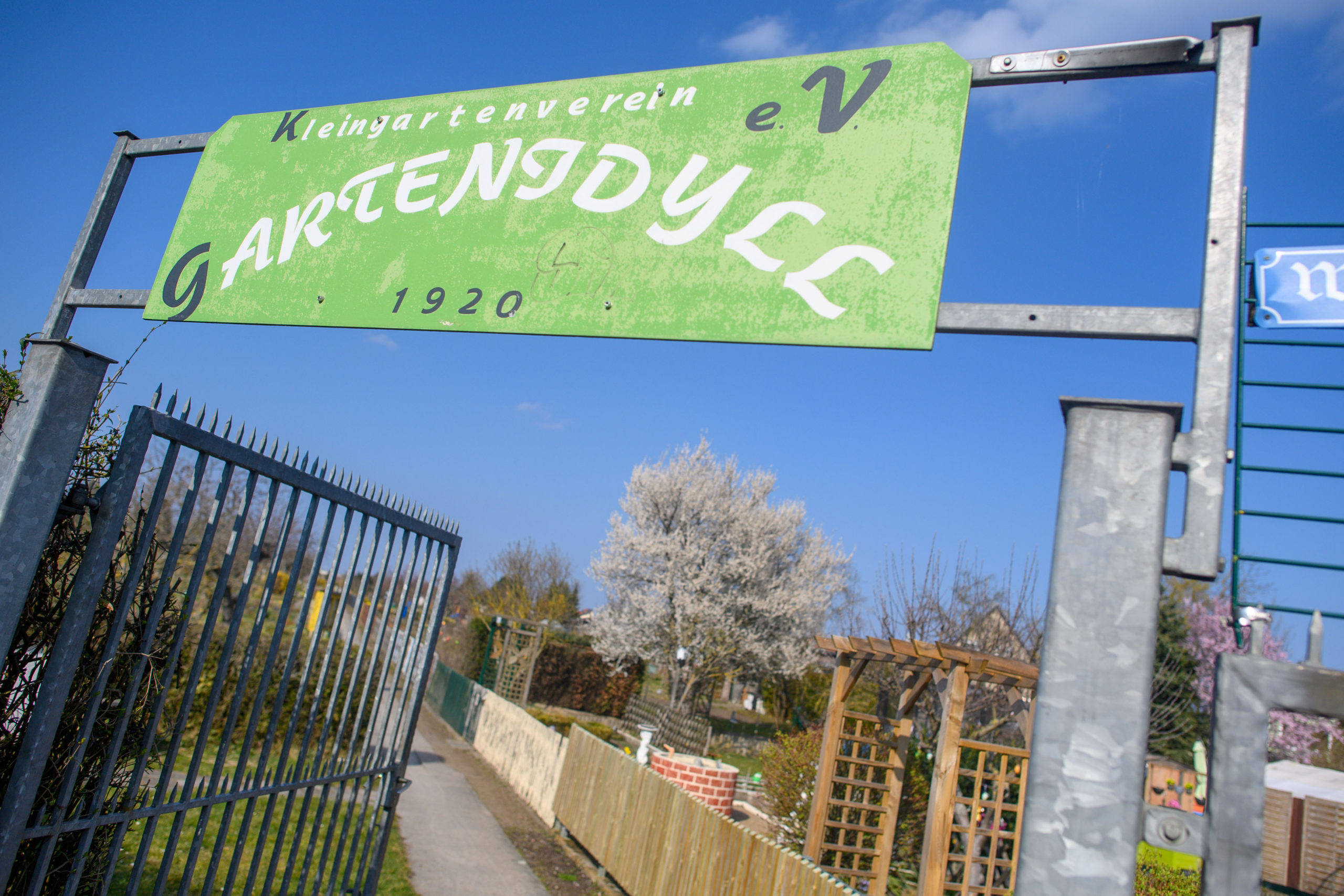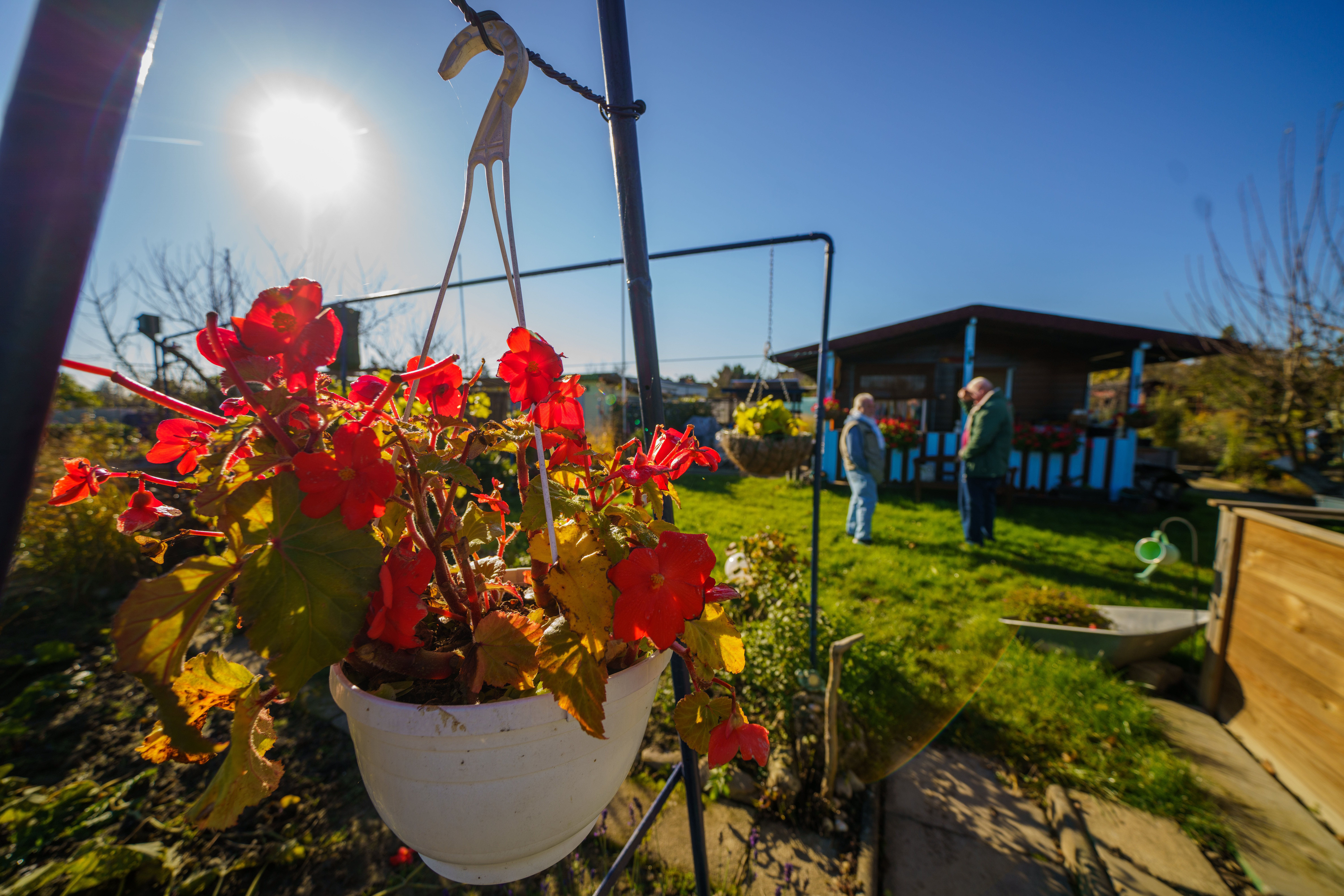EXPLAINED: How to get a Kleingarten in Germany

An estimated 5 million people in Germany make use of a garden allotment; here's what you need to do to become one of them.
In Germany, a Kleingarten or Schrebergarten is a small plot of land, similar to an allotment, which city-dwellers can rent to use as their own garden, to grow flowers, vegetables or just to enjoy the sun.
These little gardens are extremely popular; there are over 900.000 throughout the country, and the Federal Association of German Garden Friends estimate around five million people use such a garden.
Why is the Kleingarten so popular in Germany?
The fondness for allotments in Germany goes back to the mid-19th century.
The cramped living conditions and poverty in the inner cities quickly led to a steep decline in physical and psychological well-being for much of the population.
To alleviate this hardship, some local communities started offering the poorest families small patches of land near the city to grow their own vegetables, and others started providing green spaces to local communities for children to play in.
READ ALSO: The story of Germany’s oldest national park as it turns 50
The latter type of garden was given the name Schrebergarten after the physician Daniel Gottlieb Schreber, who made the revolutionary demand for playgrounds for children in the mid 19th century in order to get them off the dangerous streets. However, these eventually became used more often for their parents to grow fresh produce.
How can you get a Kleingarten?
The first thing to note is that, in order to get an allotment garden, you first have to join a communally organized garden association.
After joining a garden association and being allocated a plot, you lease the piece of land rather than renting it, which means that you are given the piece of land for an indefinite period of time with the possibility to grow fruit and vegetables there.

Trees bloom in the plots of the allotment garden association "Gartenidyll" in Saxony-Anhalt. Photo: picture alliance/dpa/dpa-Zentralbild | Klaus-Dietmar Gabbert
How can I find an available Kleingarten?
One way is to search online for the regional or district association responsible for your neighbourhood and get advice from them about free gardens in your area. Links to all of the state-wide regional garden associations can be found on the website of the German Allotment Garden federation (BDG).
Sites like eBay Kleinanzeigen and the website of your local garden associations can also be a good place to check.
Another option is to go directly to your local allotment garden association and ask on site, or to simply ask acquaintances and people in your neighbourhood.
How quickly can I get a Kleingarten?
Depending on where you live, you might have a long wait before you get your hands on your very own patch of green. Demand for allotments has risen sharply in recent years, especially in major cities. But don't let that dishearten you.
One useful tip is to put your name down on the lists of all of the eligible garden associations in your area to increase your chances of getting a spot.
How much does a Kleingarten cost?
According to a study by the Federal Institute for Research on Building, Urban Affairs and Spatial Development, the average rent of an allotment garden in Germany is 18 cents per square meter per year.
The plot area of an allotment garden usually ranges between 250 and 400 square meters, so for a 400 square meter allotment garden you can expect to pay an average annual rent of €72.
But the cost varies widely depending on where you live. In big cities with high demand, you will pay significantly more for your garden than in a small town. In Berlin, for example, you can currently expect to pay a rent of around 35 cents per square meter.
Rent is only one part of the total cost - there are also the association fees, insurance, waste collection and water costs to factor in too. But, as a rule, the ancillary costs are significantly higher in larger cities than in more rural areas.
All in all, including the lease, you should budget for annual fixed costs of between €250 to €500.

Flowers hang in a garden in the association "Kleingärtnerverein Oberursel" in Hesse. Photo: picture alliance/dpa | Andreas Arnold
What else should I be aware of?
Joining a garden association means that you must abide by certain rules and communal expectations.
READ ALSO: Why you should trim your hedge in Germany this February
Many allotment garden associations have fixed rules about keeping animals, so you should find out in advance whether you are allowed to keep chickens or rabbits or if you are allowed to bring your domestic pets to the garden.
The association rules may also specify what you can plant in your garden. For example, they may state that one-third of the total area is for growing fruits and vegetables, another third is for lawns and flower beds, and the final third is for structural use.
You should also not forget that joining an association means joining a community and that helpfulness, tolerance, and a relatively sociable nature are essential if you want to have your own patch of green space in the city.
Useful Vocabulary
To lease = pachten
Plot of land = (die) Parzelle
Comments
See Also
In Germany, a Kleingarten or Schrebergarten is a small plot of land, similar to an allotment, which city-dwellers can rent to use as their own garden, to grow flowers, vegetables or just to enjoy the sun.
These little gardens are extremely popular; there are over 900.000 throughout the country, and the Federal Association of German Garden Friends estimate around five million people use such a garden.
Why is the Kleingarten so popular in Germany?
The fondness for allotments in Germany goes back to the mid-19th century.
The cramped living conditions and poverty in the inner cities quickly led to a steep decline in physical and psychological well-being for much of the population.
To alleviate this hardship, some local communities started offering the poorest families small patches of land near the city to grow their own vegetables, and others started providing green spaces to local communities for children to play in.
READ ALSO: The story of Germany’s oldest national park as it turns 50
The latter type of garden was given the name Schrebergarten after the physician Daniel Gottlieb Schreber, who made the revolutionary demand for playgrounds for children in the mid 19th century in order to get them off the dangerous streets. However, these eventually became used more often for their parents to grow fresh produce.
How can you get a Kleingarten?
The first thing to note is that, in order to get an allotment garden, you first have to join a communally organized garden association.
After joining a garden association and being allocated a plot, you lease the piece of land rather than renting it, which means that you are given the piece of land for an indefinite period of time with the possibility to grow fruit and vegetables there.

How can I find an available Kleingarten?
One way is to search online for the regional or district association responsible for your neighbourhood and get advice from them about free gardens in your area. Links to all of the state-wide regional garden associations can be found on the website of the German Allotment Garden federation (BDG).
Sites like eBay Kleinanzeigen and the website of your local garden associations can also be a good place to check.
Another option is to go directly to your local allotment garden association and ask on site, or to simply ask acquaintances and people in your neighbourhood.
How quickly can I get a Kleingarten?
Depending on where you live, you might have a long wait before you get your hands on your very own patch of green. Demand for allotments has risen sharply in recent years, especially in major cities. But don't let that dishearten you.
One useful tip is to put your name down on the lists of all of the eligible garden associations in your area to increase your chances of getting a spot.
How much does a Kleingarten cost?
According to a study by the Federal Institute for Research on Building, Urban Affairs and Spatial Development, the average rent of an allotment garden in Germany is 18 cents per square meter per year.
The plot area of an allotment garden usually ranges between 250 and 400 square meters, so for a 400 square meter allotment garden you can expect to pay an average annual rent of €72.
But the cost varies widely depending on where you live. In big cities with high demand, you will pay significantly more for your garden than in a small town. In Berlin, for example, you can currently expect to pay a rent of around 35 cents per square meter.
Rent is only one part of the total cost - there are also the association fees, insurance, waste collection and water costs to factor in too. But, as a rule, the ancillary costs are significantly higher in larger cities than in more rural areas.
All in all, including the lease, you should budget for annual fixed costs of between €250 to €500.

What else should I be aware of?
Joining a garden association means that you must abide by certain rules and communal expectations.
READ ALSO: Why you should trim your hedge in Germany this February
Many allotment garden associations have fixed rules about keeping animals, so you should find out in advance whether you are allowed to keep chickens or rabbits or if you are allowed to bring your domestic pets to the garden.
The association rules may also specify what you can plant in your garden. For example, they may state that one-third of the total area is for growing fruits and vegetables, another third is for lawns and flower beds, and the final third is for structural use.
You should also not forget that joining an association means joining a community and that helpfulness, tolerance, and a relatively sociable nature are essential if you want to have your own patch of green space in the city.
Useful Vocabulary
To lease = pachten
Plot of land = (die) Parzelle
Join the conversation in our comments section below. Share your own views and experience and if you have a question or suggestion for our journalists then email us at [email protected].
Please keep comments civil, constructive and on topic – and make sure to read our terms of use before getting involved.
Please log in here to leave a comment.